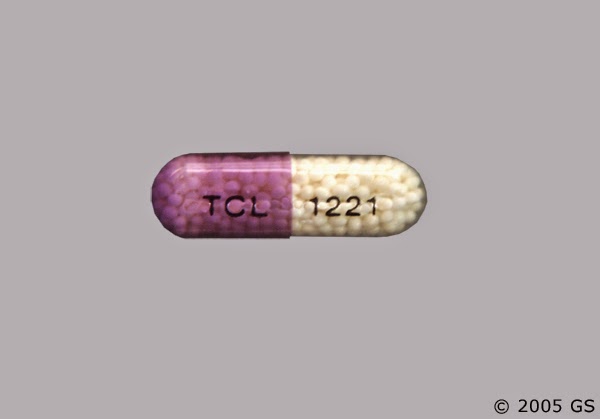Nitroglycerin - Nitroglycerin synthesis has been performed in 1844 by Antoine Jérôme Balard (Montpellier, France) who observed the collapse of animals few minutes after the administration of the drug. The vasodilatating effect of the drug was exploited by Ascani Sobrero (Torino, Italy) following work with Theophile-Jules Pelouze (1847) in Paris. Two years later, Konstantin Hering and Johann Friedrich Albers, developing the sublingual administration of nitroglycerin, observed the violent headache caused by the drug. Alfred Nobel, later founder of Nobel Prize, joined Pelouze in 1851 and recognized the potential of this yellow liquid with explosive interest. 55 He began manufacturing nitroglycerin in Sweden, overcoming handling problems with his patent detonator.
.jpg) |
Pictures of Nitroglycerin
 |
| Nitroglycerin Structural Formulae |
 |
| Nitroglycerin 2,5 mg ER cap major Pharmaceuticals |
Nobel suffered acutely from angina but refused what he considered as a chemical for a treatment. When the English physician Thomas Lauder Brunton succeeded to relieve severe recurrent angina pain in refractive patients except by bleeding, he realized that phlebotomy provided relief by lowering arterial blood pressure. This gave birth to the concept that reduced cardiac after load and work were benefi cial. When administering amyl nitrite, a potent vasodilatator, by inhalation,
Brunton noticed, in 1867, that coronary pain was transiently relieved within 30–60 s. 56 In 1876, William Murrell (Westminster Hospital London) proved that the action of nitroglycerin mimicked that of amyl nitrite, and he established the use of sublingual nitroglycerin for relief of the acute angina attack and as a prophylactic agent to be taken prior physical exercise. Almost a century later, research in the nitric oxide (NO) fi eld explaining the mode of action of nitroglycerin, has dramatically extended. In 1977, Ferid Murad (Houston, USA) discovered the release of NO from nitroglycerin and its action on vascular smooth muscle.Robert Furchgott ( Figure 1.11 ) and John Zawadski (New York, USA) recognized the importance of the endothelium in acetylcholine-induced vaso-relaxation (in 1980) and Louis Ignarro (Figure 1.11) and Salvador Moncada (London, UK) ( Figure 1.10 ) identifi ed endothelial-derived relaxing factor (EDRF) as NO (in 1987). 57 Today, glycerol trinitrate remains the treatment of choice for relieving angina; other organic esters and inorganic nitrates are also used, but the rapid action of nitroglycerin and its established effi cacy make it the mainstay of angina pectoris relief.
The role of NO in cellular signaling has become one of the most rapidly growing areas in biology during the past two decades. As a gas and free radical with an unshared electron, NO participates in various biological processes. NO is formed from the amino acid l -arginine by a family of enzymes, the NO synthases, and plays a role in many physiological functions. Its formation in vascular endothelial cells, in response to chemical stimuli and to physical stimuli such as shear stress, maintains a vasodilator tone that is essential for the regulation of blood fl ow and pressure. NO also inhibits platelet aggregation and adhesion, inhibits leukocyte adhesion and modulates smooth muscle cell proliferation. NO is also synthesized in neurons of the central nervous system (CNS), where it acts as a neuromediator with many physiological functions, including the formation of memory, coordination between neuronal activity and blood fl ow, and modulation of pain. In the peripheral nervous system, NO is now known to be the mediator released by a widespread network of nerves.
Tidak ada komentar:
Posting Komentar